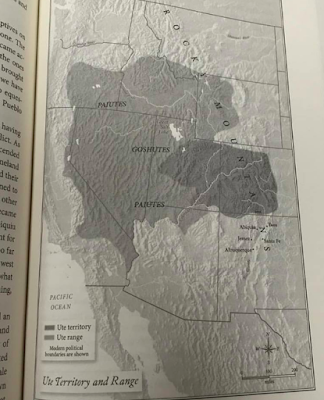The Other Slavery: The Uncovered Story of Indian Enslavement In America by Andrés Reséndez is an important book that you will want to add to your library collection.
 |
Hardcover: 448 pages
Publisher: Houghton Mifflin Harcourt (April 12, 2016)
Language: English
ISBN-10: 0547640986
ISBN-13: 978-0547640983
Product Dimensions: 6 x 1.5 x 9 inches
|
It is important in several areas:
- History
- Economics
- Law
- Political Science
It sheds new light on so many areas. It shook my understanding and revitalized my resolve to learn as much as possible about the history of our country and of the genocide that took place and in many ways is still taking place against indigenous people. For instance, I had no idea that smallpox did not hit the Caribbean until a full 26 years after Columbus' invasion. This gives new light to the claim that the majority of these Indians died from disease. These people were murdered or worked to death.
The book covers the rape of the Caribbean and how, once the local population was exhausted, the need for more slaves drove the Spanish to raid nearby lands and import slaves.
 |
| Map of slaving expeditions in the Caribbean 1510-1540 |
The first part of the book begins by looking at the Spanish system of indigenous slavery. It has a fascinating chapter that covers the fate of many indigenous people who were sent to Spain to become slaves.
 |
| Image from The Other Slavery |
|
|
|
|
Slaves could be captured in war. Meaning--if the Spanish raided your village and you resisted in ANY manner--you would be deemed a violent enemy and could be captured.
 |
| Image from The Other Slavery | | |
Slaves could also be purchased from other Indians who had captured them. This provided an incentive for Indians to slave raid other tribes an expanded market for slaves in the Americas.
The Spanish soon discovered Silver in Mexico and this caused the need for massive amounts of slave labor. The from Northern Mexico were used in massive numbers for this purpose. Mining, smelting and other labor was done by these slaves.
The system slowly turned to one of peonage. This new version of other slavery lasted well into the 20th century and probably exists today as well.
 |
| Indian peons in Guanajuato mining for silver. 1905
There
are also chapters that inform the reader of how tribes such as the Utes
were able to build slave empires by raiding other tribes and selling
their captives to the Spanish and other tribes.
There
is also an excellent chapter on the Navajo tribe's destruction and
removal which led to massive amounts of Navajo being enslaved in the
Southwest--particularly in New Mexico.
I am hooked on this topic and will be researching extensively for years thanks to this wonderful book.
 |
| Ute territory in SW North America |
There is also a great chapter on the California Genocide and Slavery starting with the Spanish and then carried on by the Americans. If an CA Indian was not 'employed' they could be arrested and then auctioned off to the highest bidder for labor. Once indentured like this, they could not leave their place of employment without 'certificates' which were almost never granted.
 |
| Passage describing the plight of CA Natives. |
The plight of indigenous slaves is little known and fascinating. This book is seminal and creates a new field for study that can help us understand where we are today and how we arrived here.
Indian Slaves in the Americas 1492-1900
If you are even remotely interested in this topic you will appreciate this book. It is well written, extensively researched and is a new instant classic. Professor Reséndez has done our country a great service by writing this informative book. Get it now!
|










Comments
Here is an example from the book by Steven Dowe Beckham, "Oregon Indians..."
He recounts the record of an armed militia bent on vengence for some killing they heard about. They attacked a small camp of mostly women and children in the dead of night and few in the camp survived. While piling every worldly possession owned by that group into a fire they discovered an old woman too weak to run from attackers. "what shall we do with her captain?". "Throw her in the fire" was the reply. That is how "Civilization" comes to Oregon.
Historical trauma is a new phrase being batted about. I say it exists. Hard to prove scientifically. But how many accounts similar to the above must one read til you are either numb or in shock. I am glad to be out of academia where I can read what I want.
http://osupress.oregonstate.edu/book/breaking-chains
No--I have not read it yet, but I picked it up at Goodwill a couple of months ago! It is coming right up for me!
Thank you.